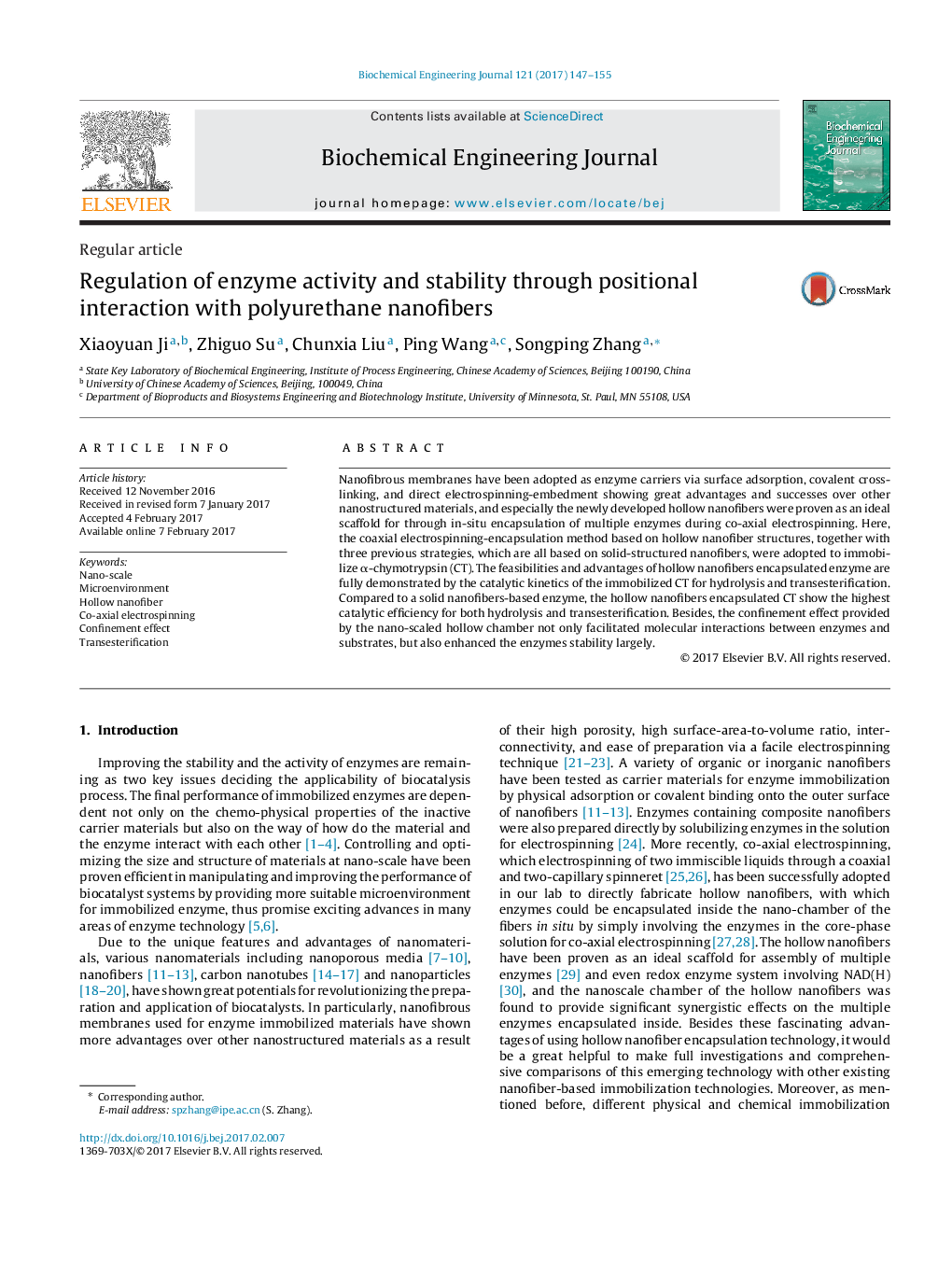| Article ID | Journal | Published Year | Pages | File Type |
|---|---|---|---|---|
| 6450392 | Biochemical Engineering Journal | 2017 | 9 Pages |
â¢Both solid and hollow nanofibers were used for CT immobilization.â¢Catalytic kinetics of CT immobilized through different methods was investigated.â¢CT encapsulated in hollow nanofibers showed the highest catalytic efficiency.â¢The confinement effect of hollow nanofibers enhanced the enzymes stability.
Nanofibrous membranes have been adopted as enzyme carriers via surface adsorption, covalent cross-linking, and direct electrospinning-embedment showing great advantages and successes over other nanostructured materials, and especially the newly developed hollow nanofibers were proven as an ideal scaffold for through in-situ encapsulation of multiple enzymes during co-axial electrospinning. Here, the coaxial electrospinning-encapsulation method based on hollow nanofiber structures, together with three previous strategies, which are all based on solid-structured nanofibers, were adopted to immobilize α-chymotrypsin (CT). The feasibilities and advantages of hollow nanofibers encapsulated enzyme are fully demonstrated by the catalytic kinetics of the immobilized CT for hydrolysis and transesterification. Compared to a solid nanofibers-based enzyme, the hollow nanofibers encapsulated CT show the highest catalytic efficiency for both hydrolysis and transesterification. Besides, the confinement effect provided by the nano-scaled hollow chamber not only facilitated molecular interactions between enzymes and substrates, but also enhanced the enzymes stability largely.
